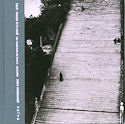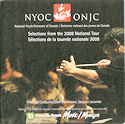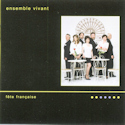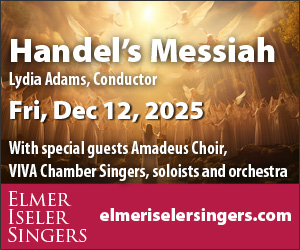 Marc Minkowski first came to the attention of Toronto concert-goers through his highly successful collaboration with Opera Atelier of Purcell’s Dido and Aeneas back in 1995. But he has been an important force on the “period performance” scene for much longer than that, having founded Les Musiciens du Louvre – Grenoble at the age of 20 in 1982. With dozens of recordings under his belt it seems strange that Minkowski has waited more than 25 years to tackle any of the major works of J. S. Bach. With the recent release of the Mass in B-minor (Naïve V 5145) all that has changed and Minkowski has embarked on a long-term projected “Bach cycle”. In the Mass Minkowski uses sparse forces which he feels reflect those which would have been available to Bach, had the work seen the light of day during his lifetime. Instrumentally there are just thirteen strings, pairs of winds and trumpets, solo horn for the famous duet with the bass voice in the Quoniam tu solus sanctus, timpani and continuo alternating between organ and harpsichord. The ten vocal soloists do double duty as one-voice-per-part choristers as required, and we are presented with an intimate, crystalline performance lasting one hour and forty-one minutes. Recorded last July during the fledgling Via Stellae Festival (Festival of Music of Compostela and its Ways of Pilgrimage) in the gothic San Domingos de Bonaval Church, Santiago de Compostela in Spain, the reverberant acoustic belies the small ensemble and we are treated to a glorious full sound without losing any of the intimacy of the performance. The predominantly young vocal soloists are all outstanding, with highlights for me being alto (and former soprano soloist in the Vienna Boys’ Choir) Terry Wey in the Qui sedes ad dextram patris with oboe d’amore provided by Emmanuel Laporte and in the duet Et in unum Dominum with soprano Lucy Crowe; and Canadian tenor Colin Balzer’s Benedictus with flute soloist Florian Cousin. Beginning the cycle with what has been called the culmination of Bach’s life’s work will prove to be a tough act for Minkowski to follow, but on the evidence of this maiden voyage there are future treasures in store. Packaged as a one hundred page, trilingual hardcover book (thankfully with CD-case dimensions for easy filing) including program notes, an interview with Minkowski, texts with translations and full artist biographies, this handsome set is a welcome addition the catalogue and to my collection.
Marc Minkowski first came to the attention of Toronto concert-goers through his highly successful collaboration with Opera Atelier of Purcell’s Dido and Aeneas back in 1995. But he has been an important force on the “period performance” scene for much longer than that, having founded Les Musiciens du Louvre – Grenoble at the age of 20 in 1982. With dozens of recordings under his belt it seems strange that Minkowski has waited more than 25 years to tackle any of the major works of J. S. Bach. With the recent release of the Mass in B-minor (Naïve V 5145) all that has changed and Minkowski has embarked on a long-term projected “Bach cycle”. In the Mass Minkowski uses sparse forces which he feels reflect those which would have been available to Bach, had the work seen the light of day during his lifetime. Instrumentally there are just thirteen strings, pairs of winds and trumpets, solo horn for the famous duet with the bass voice in the Quoniam tu solus sanctus, timpani and continuo alternating between organ and harpsichord. The ten vocal soloists do double duty as one-voice-per-part choristers as required, and we are presented with an intimate, crystalline performance lasting one hour and forty-one minutes. Recorded last July during the fledgling Via Stellae Festival (Festival of Music of Compostela and its Ways of Pilgrimage) in the gothic San Domingos de Bonaval Church, Santiago de Compostela in Spain, the reverberant acoustic belies the small ensemble and we are treated to a glorious full sound without losing any of the intimacy of the performance. The predominantly young vocal soloists are all outstanding, with highlights for me being alto (and former soprano soloist in the Vienna Boys’ Choir) Terry Wey in the Qui sedes ad dextram patris with oboe d’amore provided by Emmanuel Laporte and in the duet Et in unum Dominum with soprano Lucy Crowe; and Canadian tenor Colin Balzer’s Benedictus with flute soloist Florian Cousin. Beginning the cycle with what has been called the culmination of Bach’s life’s work will prove to be a tough act for Minkowski to follow, but on the evidence of this maiden voyage there are future treasures in store. Packaged as a one hundred page, trilingual hardcover book (thankfully with CD-case dimensions for easy filing) including program notes, an interview with Minkowski, texts with translations and full artist biographies, this handsome set is a welcome addition the catalogue and to my collection.
Bach: B Minor 'Mass![]()
At Grigorian.Com
 Last month the National Youth Orchestra of Canada announced the 100 members of the 2009 edition of the orchestra selected from some 550 applicants across the county. If Selections from the 2008 National Tour (NYOC2008CD www.nyoc.org) is any indication, audiences have a treat in store in August when this year’s orchestra, under the direction of Alain Trudel, tours Ontario and Quebec with stops including the National Arts Centre and Roy Thomson Hall. Last year the baton was held by Trois-Rivières native Jacques Lacombe, who is currently making his mark on the opera stages of Europe and will make his debut at Covent Garden this summer. Lacombe leads the 2008 NYOC in very strong performances of late 19th, 20th and 21st century works. The two disc set begins with Kelly-Marie Murphy’s Through the Unknown, Unremembered Gate, a work which, as I suspected but is not attributed as such in the disc’s liner notes, was commissioned by the NYOC in which orchestra members are required to vocalize as well as play their instruments. It is quite an effective, dramatic work and Toronto audiences will have a chance to hear the TSO perform it during the New Creations Festival in February 2010. Murphy’s piece is followed by convincing performances of Mahler’s First Symphony “The Titan” (with my compliments to the excellent horn section) and Prokofiev’s “Scythian Suite”, but where the orchestra truly shines is in Richard Strauss’ Ein Heldenleben. Concertmasters Aysel Taghi-Zada and Kenny Wong turn in stellar performances in the solo roles, but the work, which leaves each section of the orchestra exposed in turn, is testament to the fact that there are simply no weak links in this well-oiled machine. These discs make it easy to see why a third of all the players in professional Canadian orchestras are alumni of the NYOC which next season will celebrate 50 years since its founding by Walter Susskind back in 1960.
Last month the National Youth Orchestra of Canada announced the 100 members of the 2009 edition of the orchestra selected from some 550 applicants across the county. If Selections from the 2008 National Tour (NYOC2008CD www.nyoc.org) is any indication, audiences have a treat in store in August when this year’s orchestra, under the direction of Alain Trudel, tours Ontario and Quebec with stops including the National Arts Centre and Roy Thomson Hall. Last year the baton was held by Trois-Rivières native Jacques Lacombe, who is currently making his mark on the opera stages of Europe and will make his debut at Covent Garden this summer. Lacombe leads the 2008 NYOC in very strong performances of late 19th, 20th and 21st century works. The two disc set begins with Kelly-Marie Murphy’s Through the Unknown, Unremembered Gate, a work which, as I suspected but is not attributed as such in the disc’s liner notes, was commissioned by the NYOC in which orchestra members are required to vocalize as well as play their instruments. It is quite an effective, dramatic work and Toronto audiences will have a chance to hear the TSO perform it during the New Creations Festival in February 2010. Murphy’s piece is followed by convincing performances of Mahler’s First Symphony “The Titan” (with my compliments to the excellent horn section) and Prokofiev’s “Scythian Suite”, but where the orchestra truly shines is in Richard Strauss’ Ein Heldenleben. Concertmasters Aysel Taghi-Zada and Kenny Wong turn in stellar performances in the solo roles, but the work, which leaves each section of the orchestra exposed in turn, is testament to the fact that there are simply no weak links in this well-oiled machine. These discs make it easy to see why a third of all the players in professional Canadian orchestras are alumni of the NYOC which next season will celebrate 50 years since its founding by Walter Susskind back in 1960.
A couple of months ago in this column I noted the 20th anniversary release by Catherine Wilson’s Ensemble Vivant. Not content to rest on their laurels, the ensemble has just released Fête  Française (Opening Day ODR 9379 www.openingday.com). Over the years I must confess that I have tended to ignore the group’s recordings simply as bomboniere, collections of lighter fare, all dessert and no main course. I am very pleased to find their latest release contains a much more substantial menu, with little known works by familiar composers to which we have not been overexposed in the past. Of particular note for me is the Debussy Piano Trio in G Major, an early work which was suppressed by the composer and only came to light in 1980. Having had a go at this one with my own amateur trio I was very happy to find a wonderful performance of it on this new recording. Although Debussy decided that this was not something he wanted to send out into the world to represent him, it does provide a pivotal glimpse into his development and the world he was leaving behind with the new ideas that would lead him to Impressionism. The CD also includes two other rarities, a charming collection of Alsatian folk melodies set for piano, violin and cello by Charles-Marie Widor, a composer known to most only for his organ works, and a Septet by Camille Saint-Saëns. This latter is a backward-looking work which had it been composed 50 years later – in 1930 instead of 1880 – would have been called neo-classical, or more accurately neo-baroque. Scored for the unusual combination of string quintet (with double bass), piano and trumpet, it was commissioned by the organizer of a society of wind players called La Trompette, and consists of a suite of dance movements including a menuet and gavotte. Congratulations to Ensemble Vivante for uncovering these works and presenting them with their usual flare.
Française (Opening Day ODR 9379 www.openingday.com). Over the years I must confess that I have tended to ignore the group’s recordings simply as bomboniere, collections of lighter fare, all dessert and no main course. I am very pleased to find their latest release contains a much more substantial menu, with little known works by familiar composers to which we have not been overexposed in the past. Of particular note for me is the Debussy Piano Trio in G Major, an early work which was suppressed by the composer and only came to light in 1980. Having had a go at this one with my own amateur trio I was very happy to find a wonderful performance of it on this new recording. Although Debussy decided that this was not something he wanted to send out into the world to represent him, it does provide a pivotal glimpse into his development and the world he was leaving behind with the new ideas that would lead him to Impressionism. The CD also includes two other rarities, a charming collection of Alsatian folk melodies set for piano, violin and cello by Charles-Marie Widor, a composer known to most only for his organ works, and a Septet by Camille Saint-Saëns. This latter is a backward-looking work which had it been composed 50 years later – in 1930 instead of 1880 – would have been called neo-classical, or more accurately neo-baroque. Scored for the unusual combination of string quintet (with double bass), piano and trumpet, it was commissioned by the organizer of a society of wind players called La Trompette, and consists of a suite of dance movements including a menuet and gavotte. Congratulations to Ensemble Vivante for uncovering these works and presenting them with their usual flare.
We welcome your feedback and invite submissions. CDs and comments should be sent to: The WholeNote, 503 – 720 Bathurst St. Toronto ON M5S 2R4.
David Olds
DISCoveries Editor
discoveries@thewholenote.com



